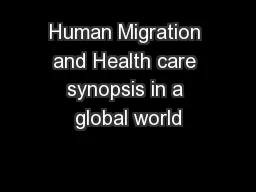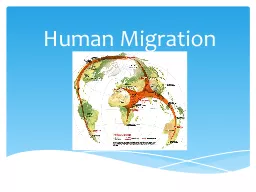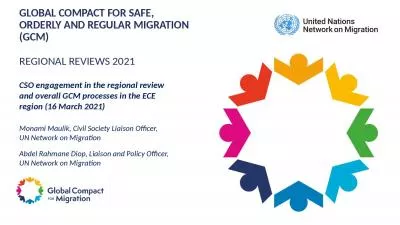PPT-Human Migration and Health care synopsis in a global world
Author : marina-yarberry | Published Date : 2017-09-06
Santiago Arias Kelton Fredric Bernardo Gonzalez Kayla Lockcuff Background Gross Domestic Product GDP commonly used as indicator of countrys status effectiveness
Presentation Embed Code
Download Presentation
Download Presentation The PPT/PDF document "Human Migration and Health care synopsis..." is the property of its rightful owner. Permission is granted to download and print the materials on this website for personal, non-commercial use only, and to display it on your personal computer provided you do not modify the materials and that you retain all copyright notices contained in the materials. By downloading content from our website, you accept the terms of this agreement.
Human Migration and Health care synopsis in a global world: Transcript
Download Rules Of Document
"Human Migration and Health care synopsis in a global world"The content belongs to its owner. You may download and print it for personal use, without modification, and keep all copyright notices. By downloading, you agree to these terms.
Related Documents














